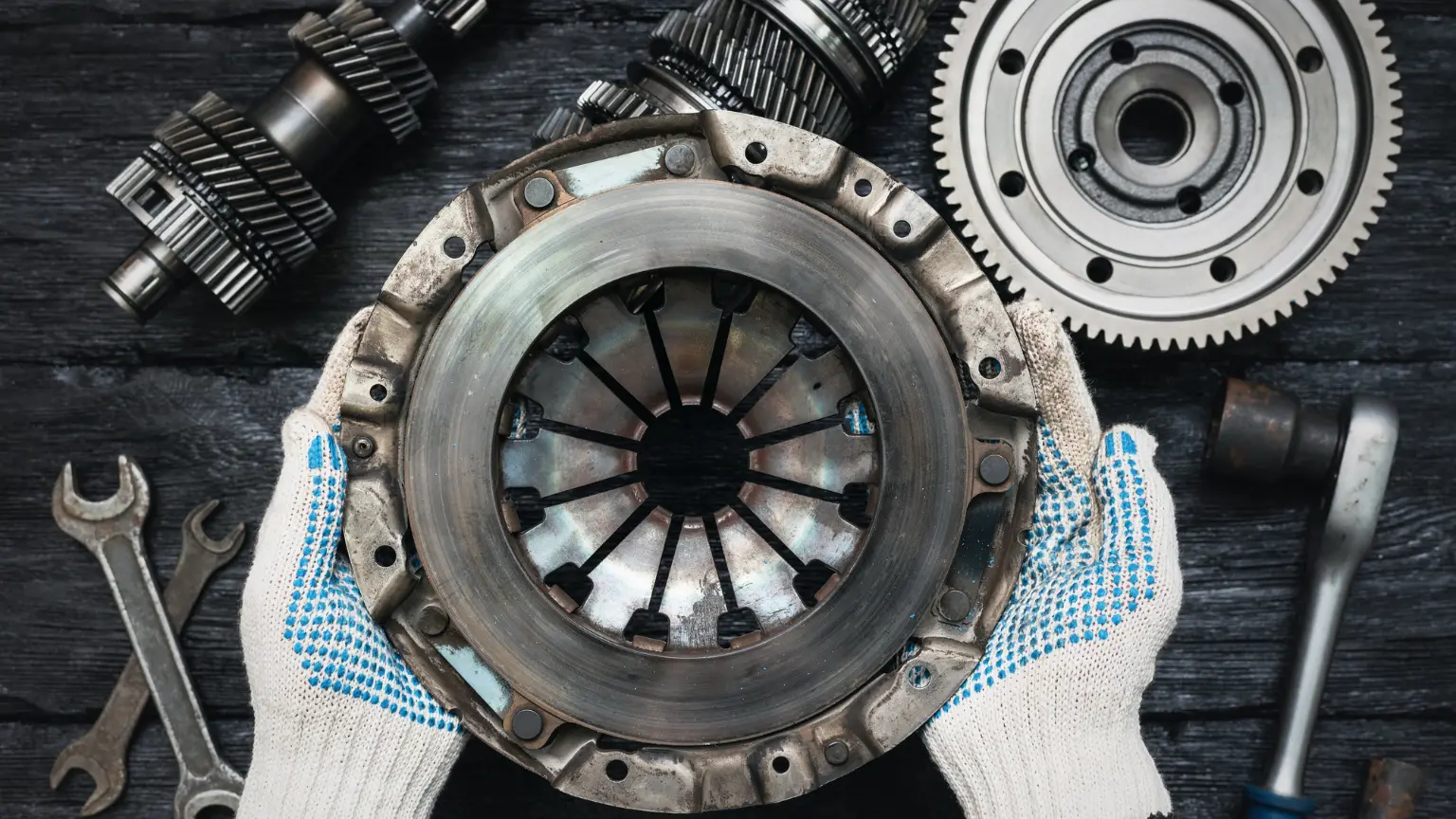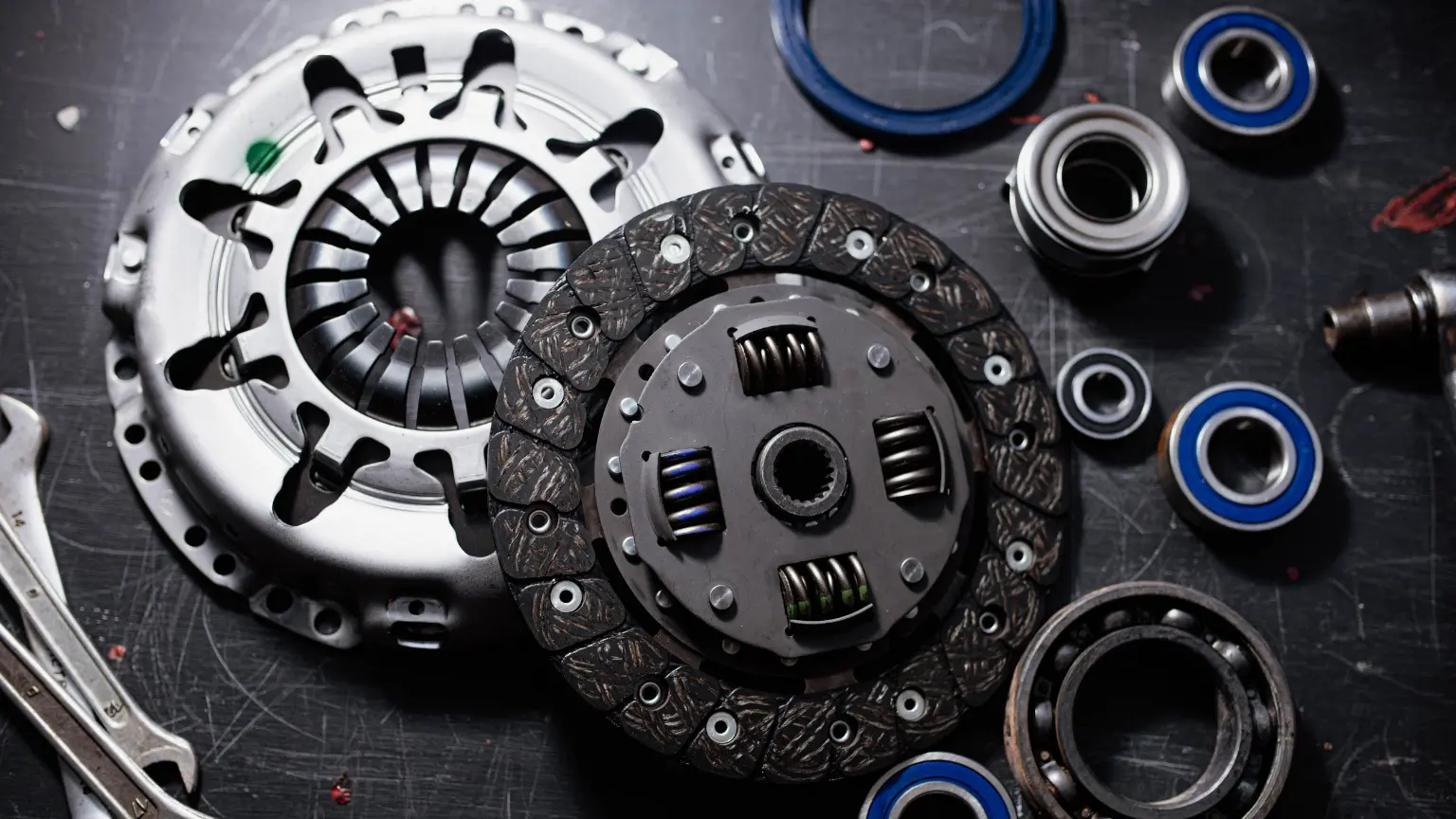Dual-Clutch vs. Traditional Automatic Transmissions: What Sets Them Apart
Explore main transmission types—manual, automatic, CVT & dual-clutch. Discover how DCT’s twin-clutch design delivers rapid, smooth shifts, improved fuel efficiency, and unique maintenance needs.
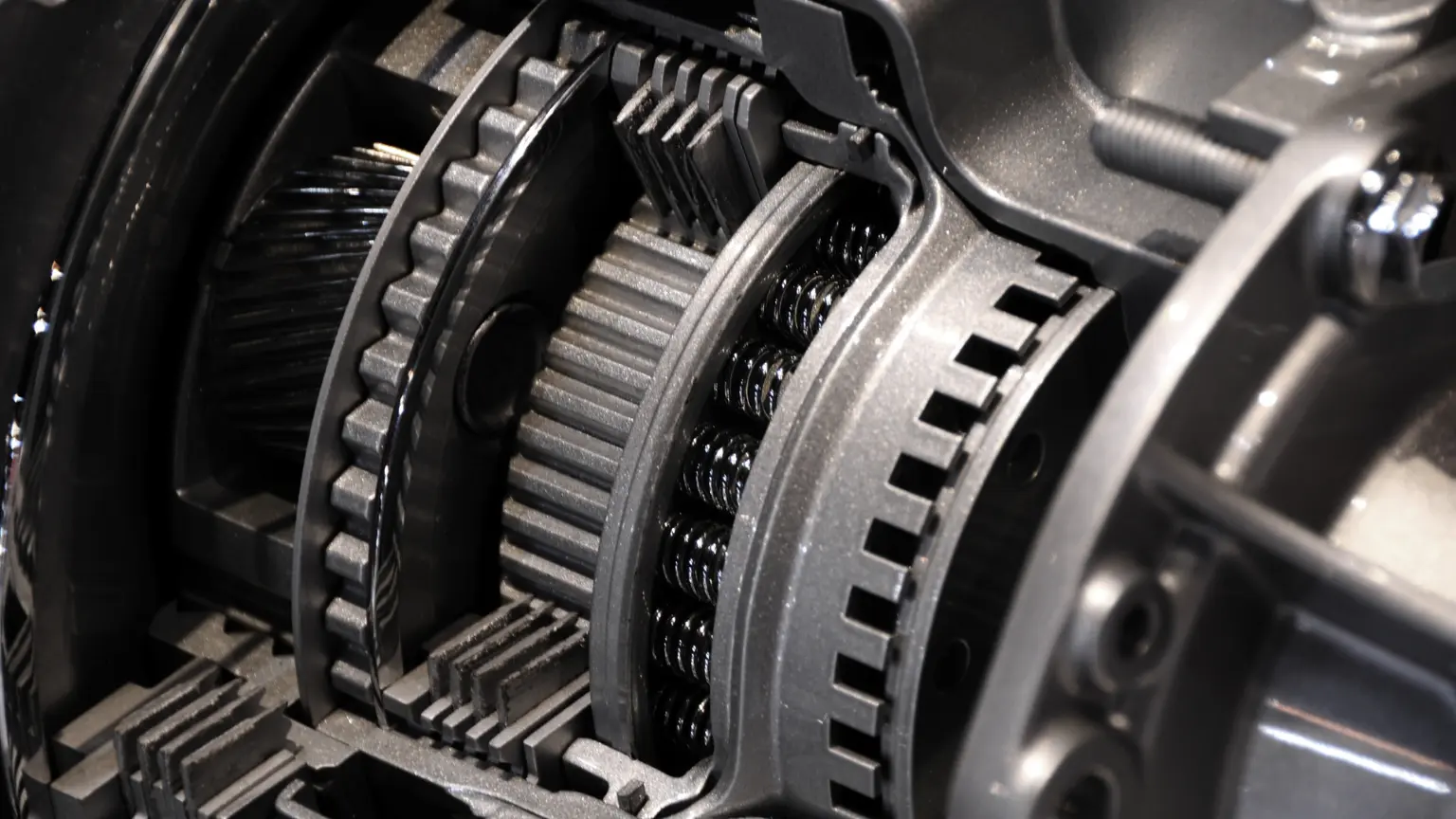
When we talk about cars, one of the key components that plays a crucial role in driving dynamics is the transmission. Transmissions come in various types, each with its own unique set of characteristics and operational mechanisms. The most common types include manual transmissions, automatic transmissions, continuously variable transmissions (CVT), and dual-clutch transmissions. Each type affects your vehicle's performance, fuel efficiency, and the driver's engagement level differently. Understanding these differences is essential for anyone interested in cars, whether you're buying a new vehicle or just curious about how they work.
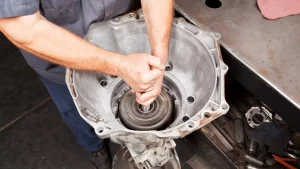
How Dual-Clutch Transmissions Work
The Mechanism
Dual-clutch transmissions offer a unique method of operation that sets them apart from other types of gearboxes. Essentially, a DCT works with two independent clutches, each assigned to manage a specific set of gears. One clutch controls the odd gears, and the other manages the even gears. As a result, the shift lag typically experienced in traditional transmissions is drastically reduced. This configuration not only enhances the performance of dual-clutch transmissions but also contributes to a more stable and responsive driving experience, especially in situations where quick acceleration is needed.
Benefits of Faster and Smoother Gear Changes
The primary benefits of dual-clutch transmissions include rapid and smooth gear shifts, which are critical in high-performance driving scenarios. The ability to change gears almost instantaneously minimizes the loss of power and momentum, which is a common drawback in single-clutch systems. This efficiency is particularly beneficial in sports cars and performance vehicles, where the split-second difference in gear shifting can impact overall driving dynamics. Additionally, the smoother transitions contribute to a more comfortable ride, reducing the jerky or jolting sensations often associated with gear changes in traditional automatics.
Dual-clutch Transmission Advantages
Better Fuel Efficiency
Vehicles equipped with dual-clutch gearboxes often exhibit better fuel efficiency compared to those with traditional automatic transmissions. As emphasized earlier, the efficiency of DCTs stems from their ability to shift gears quickly and at precisely the right engine speed, thereby optimizing fuel consumption. The fast gear changes reduce the time spent in lower gears, where fuel use is higher. Moreover, the dual-clutch system minimizes energy losses during transmission, contributing to overall vehicle efficiency and supporting a more eco-friendly driving experience.
Enhanced Driving Performance
The dual-clutch system allows for sharper acceleration and more refined control over the vehicle, providing a driving experience that is both engaging and enjoyable. This makes DCTs particularly popular among driving enthusiasts who value precision and agility. Additionally, the inherent characteristics of DCTs, such as reduced power interruption and efficient gear utilization, translate into better handling and stability, particularly in dynamic driving situations.
Best Cars with Dual-Clutch Transmissions
High-Performance Sports Cars
High-performance sports cars often utilize dual-clutch transmissions due to their ability to handle high speeds and rapid gear shifts effectively. The precise and swift gear changes offered by DCTs are essential in sports cars, where every millisecond counts, especially on the track. Here are some examples:
- Porsche 911 GT3: The Porsche 911 GT3 is the epitome of engineering excellence, featuring a highly refined dual-clutch transmission and reliability. This model stands out for its exceptional handling and high-speed capabilities, making it a favorite among car enthusiasts and professional drivers alike. The DCT in the GT3 is designed for precision, offering quick shift times that enhance the car’s performance on both racetracks and city roads. With a focus on delivering a balanced mix of everyday usability and race-track readiness, the GT3’s DCT allows drivers to experience a seamless blend of power and finesse.
- Audi R8: The agile dual-clutch gearbox of the Audi R8 is a wonderful match for its powerful V10 engine. This setup provides drivers with swift, seamless gear transitions, enhancing the dynamic and responsive driving experience for which the R8 is known. The DCT enables the R8 to leverage its engine's capabilities fully, translating raw power into smooth, effortless acceleration. This car not only delivers stellar performance but also offers the precision and agility needed to handle high speeds with ease, making it a top choice for those who crave a spirited driving experience.
- Ferrari 488 GTB: Ferrari's 488 GTB is renowned for its aggressive styling and sporty performance, greatly enhanced by its advanced dual-clutch transmission. The DCT in the 488 GTB is specifically engineered to handle the demands of aggressive driving, allowing the car to perform at its peak. It ensures smooth, rapid gear shifts that help maintain the engine in its optimal power range, thus maximizing acceleration and responsiveness. In addition to meeting the high-performance standards of the Ferrari, this transmission system provides a level of comfort that makes driving the 488 GTB enjoyable in any situation.
These examples demonstrate how DCT technology has become a crucial component in the design of high-performance vehicles, providing both speed and efficiency without compromising comfort or drivability. This innovative approach ensures that enthusiasts and professionals alike can enjoy the best of both worlds.
Luxury Vehicles with Advanced Technology
These vehicles are designed for drivers who seek the elegance and high-status comfort of luxury models but also desire the responsiveness and performance of a sportier transmission. Brands like Mercedes-Benz and BMW incorporate DCTs into their luxury lines to provide a smooth yet responsive ride, ensuring that luxury car owners do not have to compromise on performance in favor of comfort and opulence.
Popular Models Featuring DCTs
Brands like Volkswagen and Ford have integrated DCT technology into their models, making advanced transmission systems more accessible to a wider audience. The adoption of DCTs in popular models such as the Volkswagen Golf GTI and Ford Focus RS has showcased the significant benefits of this technology. As mentioned, these benefits include faster gear shifts, which lead to improved acceleration, alongside better fuel economy compared to traditional automatic transmissions. As such, these vehicles have set new benchmarks in their respective categories, appealing to consumers who value both performance and efficiency.
The ongoing evolution of DCT technology underscores its pivotal role in the transition toward more sustainable automotive technologies. Modern DCTs are being increasingly designed to work seamlessly with hybrid and fully electric powertrains, promising significant improvements in energy efficiency and reduced emissions. This adaptability makes DCTs an integral part of the automotive industry's response to growing environmental concerns and stringent emissions regulations.
Cost Implications of Dual-Clutch vs. Traditional Automatic Transmissions
When considering the cost implications of dual-clutch and traditional automatic transmissions, buyers should weigh both the initial purchase price and the long-term ownership expenses. Generally, vehicles equipped with dual-clutch transmissions (DCTs) tend to have a higher upfront cost compared to those equipped with conventional automatic transmissions. This price difference is largely due to the advanced engineering and precision components required to deliver the rapid, seamless gear changes that DCTs are known for. The added complexity and performance benefits of dual-clutch systems often position them in higher-end or performance-oriented models, further contributing to the initial price premium.
Beyond the purchase price, long-term ownership costs can also differ between the two transmission types. DCTs, while offering improved driving dynamics and efficiency, may incur higher maintenance and repair expenses over time due to their intricate design and the specialized knowledge required for servicing. Replacement parts and fluids for dual-clutch systems can be more expensive, and fewer independent repair shops may have the expertise to handle complex DCT repairs, potentially leading to higher service fees at dealerships. In contrast, traditional automatics are generally more widespread, with parts and service being more accessible and often less costly. However, it’s essential for buyers to consider their driving habits and maintenance preferences, as the total cost of ownership will ultimately depend on individual circumstances and how the vehicle is used and maintained.
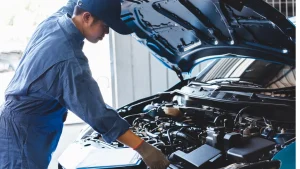
Dual-Clutch Transmission Maintenance Tips
Importance of Regular Servicing
Unlike traditional automatics, DCTs require specific attention due to their complex internal mechanics. Regular maintenance checks ensure that all components, such as the clutches and gear assemblies, are functioning correctly. Servicing helps identify potential issues early, preventing costly repairs and prolonging the transmission’s lifespan. For vehicle owners, staying on top of service schedules means fewer surprises and more consistent, reliable performance from their cars.
Specific Maintenance Tips for DCTs
Maintaining a dual-clutch transmission involves several specific practices that can significantly impact its performance and durability. Here are some important maintenance tips for owners of DCT-equipped vehicles:
- Transmission Fluid Change: It's essential to check and replace the transmission fluid in dual-clutch transmissions regularly. Unlike conventional automatics, DCTs require specific types of fluids that are formulated to handle the unique demands of high-performance shifting mechanisms. Using the correct fluid as specified by the vehicle manufacturer is crucial not only for ensuring optimal performance but also for preventing potential damage to the transmission. These can prevent the buildup of debris and ensure that all components are properly lubricated.
- Software Updates: Many modern DCTs are equipped with sophisticated software that controls the shifting patterns and timing. Keeping this software up to date is critical as manufacturers often release updates to enhance performance and rectify any existing bugs. Such updates can improve the overall efficiency of the transmission, ensuring smoother shifts and better handling of the vehicle. It's advisable to consult with a professional or a dealership to ensure your vehicle's software is current.
- Clutch Alignment and Calibration: Periodically checking the alignment and calibration of the clutches is vital for maintaining a DCT. Misalignment or improper calibration can lead to inefficient gear shifting, which in turn can increase wear on the transmission. Regular checks can help ensure that the clutches are properly aligned and functioning correctly, thereby maintaining the transmission's efficiency and prolonging its life.
- Heat Management: Dual-clutch transmissions can generate a significant amount of heat, especially under high-performance or heavy usage conditions. Ensuring that your vehicle has a robust cooling system is imperative to prevent overheating, which can lead to serious transmission problems. Effective heat management helps in maintaining the performance of the DCT and avoiding heat-related damage.
Proper maintenance of a dual-clutch transmission can greatly extend its lifespan and enhance vehicle performance. By adhering to these specific care instructions, owners can ensure their DCT-equipped vehicles continue to operate at their best, providing a seamless and enjoyable driving experience.
Finding a Reputable Transmission Repair Shop
Tips for Choosing a Reliable Repair Shop
Choosing the right transmission repair shop is crucial for ensuring that your vehicle's complex systems are handled with expert care. Especially for cars with specialized components like dual-clutch transmissions, the quality of repair work can significantly affect the vehicle's performance and longevity. Here are some tips to help you find a reliable service provider:
- Check for Certifications: Certifications are a testament to the mechanics’ qualifications and their familiarity with the latest automotive technologies. Specifically, for dual-clutch transmissions, which require detailed technical knowledge, having certified technicians indicates that the shop is equipped to handle advanced repair tasks. These certifications ensure that the mechanics have undergone rigorous training and are capable of addressing complex issues with competence.
- Read Reviews and Testimonials: Online reviews and testimonials are invaluable when assessing the credibility and quality of a transmission repair shop. Look for reviews that specifically discuss the shop’s expertise with transmission repairs, especially if they pertain to dual-clutch systems, which are more intricate than traditional setups. Positive feedback on handling such sophisticated systems can be a strong indicator of the shop’s capability and reliability.
- Ask for Recommendations: One of the most effective ways to find a reputable transmission repair shop is through recommendations from friends, family, or participants in trusted automotive forums. People who have had direct experiences with repair services can provide honest insights and suggest shops that specialize in dual-clutch transmissions. This first-hand information can be particularly useful in steering you toward providers who have proven their expertise and reliability in the field.
- Inquire About Warranty and Services: A reputable shop will offer a warranty on its repair work. This not only demonstrates confidence in their services but also provides you with protection and peace of mind. Make sure to ask about the terms and duration of the warranty, especially as it relates to transmission work, which can be complex and costly. A comprehensive warranty is often an indication of high-quality service and accountability from the provider.
- Visit the Shop: Visiting the repair shop personally is a crucial step. This visit allows you to measure the level of professionalism and customer service firsthand. Observing the shop’s operations, asking questions about their experience with dual-clutch transmissions, and assessing the cleanliness and organization of the facility can provide further confidence in your choice.
By carefully considering these aspects, you can ensure that you select a transmission repair shop that will provide high-quality and reliable service, keeping your vehicle in optimal running condition.
What to Expect During Transmission Repairs
When you take your car in for transmission repair, expect the shop to perform a thorough diagnostic to pinpoint any issues. This might include checking the transmission fluid for quality and level, inspecting the internal transmission components, and testing the vehicle’s performance on a road test. Effective diagnostics should be followed by clear communication from the technician, explaining the problems and the necessary repairs. Understanding this process can help you make informed decisions about your vehicle’s maintenance and ensure that your transmission remains in optimal condition.
Fuel Economy: Dual-Clutch vs. Traditional Automatic Transmissions
When evaluating transmissions, one of the most important considerations for many drivers is how each type affects fuel consumption and overall energy efficiency. The design and operational principles of dual-clutch and traditional automatic transmissions result in notable differences in how efficiently they transfer engine power to the wheels, directly impacting the fuel consumption of your vehicle.
- Dual-Clutch Transmissions (DCTs): This advantage stems from their direct mechanical connection, which minimizes energy losses during gear changes. By pre-selecting the next gear and eliminating torque converter slip, DCTs ensure that more engine power is transferred to the wheels with less wasted energy. As a result, vehicles equipped with DCTs often achieve better mileage, especially in stop-and-go traffic or during spirited driving where rapid, precise shifts are beneficial.
- Traditional Automatic Transmissions: Traditional automatics typically rely on a torque converter, which, while providing smoothness and convenience, introduces a degree of power loss due to fluid coupling and slippage. This can result in lower overall energy efficiency, particularly at lower speeds or under heavy acceleration. Although advancements like lock-up torque converters and additional gears have improved their performance, traditional automatics still tend to consume more fuel compared to DCTs, especially in situations where frequent gear changes are required.
Traditional automatics, while improving with modern technology, often lag slightly behind in this area due to inherent design differences. For drivers prioritizing maximum efficiency, understanding these distinctions is key to making an informed decision.
Maintenance and Reliability
Understanding their maintenance requirements, repair costs, and overall reliability is crucial for making an informed decision about ownership. Each transmission type presents unique considerations that can significantly impact long-term satisfaction and expenses.
- Dual-Clutch Transmissions: Dual-clutch transmissions require precise, regular maintenance, including specialized fluid changes and periodic software updates to ensure smooth operation. Their complex design often means higher potential repair costs, as parts and skilled labor can be expensive and less widely available. While DCTs offer excellent performance, they may be prone to issues like clutch wear or overheating, especially under heavy use. Reliability can be high with proper care, but neglecting recommended service intervals can lead to costly repairs and reduced lifespan.
- Traditional Automatic Transmissions: Standard fluid changes and occasional filter replacements are typically sufficient to keep them running smoothly. Repair costs are often lower compared to DCTs, thanks to the widespread availability of parts and experienced technicians. However, problems such as torque converter failure or hydraulic leaks can still arise. Overall, traditional automatics tend to offer strong reliability, especially when maintained according to manufacturer guidelines and not subjected to extreme driving conditions.
By weighing these factors, car owners can better anticipate the ongoing needs and potential challenges associated with each transmission type, leading to more confident and cost-effective vehicle ownership.
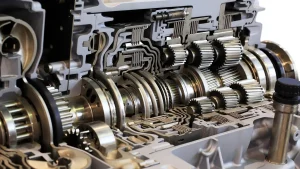
In this exploration of dual-clutch transmission vs automatic, we've highlighted the significant differences and benefits that dual-clutch technology in cars offers. Dual-clutch transmissions provide quicker gear changes, better fuel efficiency, and enhanced driving performance compared to their traditional counterparts. These advantages stem from the sophisticated design of DCTs, which employ two separate clutches for odd and even gears, enabling seamless and rapid gear shifts. The ability to combine the convenience of automatics with the efficiency of manual shifting makes dual-clutch transmissions a preferred choice for both everyday drivers and performance enthusiasts.
Follow a maintenance program
Ante gravida id aenean quis egestas risus nam amet nullam leo diam diam aliquam eu eu malesuada arcu rhoncus suspendisse nulla mattis ut amet sagittis in justo egestas.

search for a trusted mechanic
Lorem ipsum dolor sit amet, consectetur adipiscing elit lobortis arcu enim urna adipiscing praesent velit viverra sit semper lorem eu cursus vel hendrerit elementum morbi curabitur etiam nibh justo, lorem aliquet donec sed sit mi dignissim at ante massa mattis.
- Neque sodales ut etiam sit amet nisl purus non tellus orci ac auctor
- Adipiscing elit ut aliquam purus sit amet viverra suspendisse potent
- Mauris commodo quis imperdiet massa tincidunt nunc pulvinar
- Excepteur sint occaecat cupidatat non proident sunt in culpa qui officia
Check the air pressure in your tires
Vitae congue eu consequat ac felis placerat vestibulum lectus mauris ultrices cursus sit amet dictum sit amet justo donec enim diam porttitor lacus luctus accumsan tortor posuere praesent tristique magna sit amet purus gravida quis blandit turpis.
Review your suspension frequently
At risus viverra adipiscing at in tellus integer feugiat nisl pretium fusce id velit ut tortor sagittis orci a scelerisque purus semper eget at lectus urna duis convallis. porta nibh venenatis cras sed felis eget neque laoreet suspendisse interdum consectetur libero id faucibus nisl donec pretium vulputate sapien nec sagittis aliquam nunc lobortis mattis aliquam faucibus purus in.
- Neque sodales ut etiam sit amet nisl purus non tellus orci ac auctor
- Adipiscing elit ut aliquam purus sit amet viverra suspendisse potent
- Mauris commodo quis imperdiet massa tincidunt nunc pulvinar
- Excepteur sint occaecat cupidatat non proident sunt in culpa qui officia
Service your vehicle as regularly as posible
At risus viverra adipiscing at in tellus integer feugiat nisl pretium fusce id velit ut tortor sagittis orci a scelerisque purus semper eget at lectus urna duis convallis. porta nibh venenatis cras sed felis eget neque laoreet suspendisse interdum consectetur libero id faucibus nisl donec pretium vulputate sapien nec sagittis aliquam nunc lobortis mattis aliquam faucibus purus in.
“Nisi quis eleifend quam adipiscing vitae aliquet bibendum enim facilisis gravida neque velit euismod in pellentesque”
Conclusion
Eget lorem dolor sed viverra ipsum nunc aliquet bibendum felis donec et odio pellentesque diam volutpat commodo sed egestas aliquam sem fringilla ut morbi tincidunt augue interdum velit euismod eu tincidunt tortor aliquam nulla facilisi aenean sed adipiscing diam donec adipiscing ut lectus arcu bibendum at varius vel pharetra nibh venenatis cras sed felis eget.

